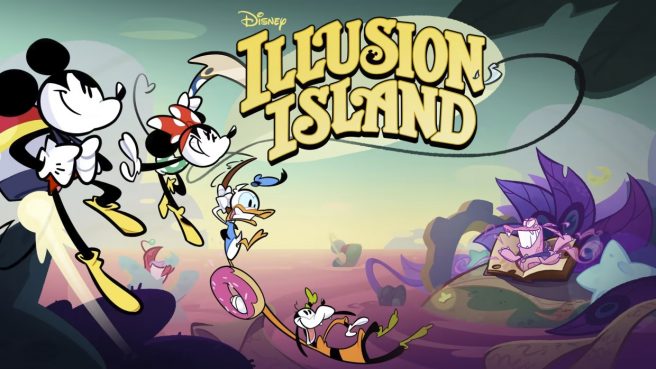[Interview] Disney Illusion Island’s lead designer discusses making a combat-free game, working with Disney, and more
After a surprise reveal at D23 Expo last year, Disney Illusion Island - an upcoming 2D Metroidvania from the makers of the recent Battletoads reboot – is set to launch exclusively on Switch in late July. After getting to spend nearly an hour with it at Summer Game Fest, I spoke with lead designer Grant Allen about its development, what it’s like working with such iconic characters, and what players can expect when the full game releases.
To start, can you tell me a bit about what Disney Illusion Island is, and what players can expect as they progress through the game?
Disney Illusion Island is a four-player open world Mickeyvania starring Mickey, Minnie, Donald and Goofy. So you’ll be making your way through the island of Monoth, which is where the game takes place. You’ll be unlocking abilities as you go navigating around the different biomes, all to collect the Tomes of Knowledge that exist there to be able to save the island.
And this is a totally original Disney story. Can you give us a little tease of what players can expect?
Yes, so, completely original. They arrive at the land of Monoth, brought there by Toku for a picnic. Turns out there isn’t a picnic, but they’ve led you there to help save the island. So, you navigate around all the biomes, searching for the fiends that have stolen these magical books. So, every character outside of the Fab Four is completely new – Disney allowed us to create a completely new world of new characters. I’m trying to think of what I can say without spoiling stuff. And I’m not going to say any more because you have to play the game!
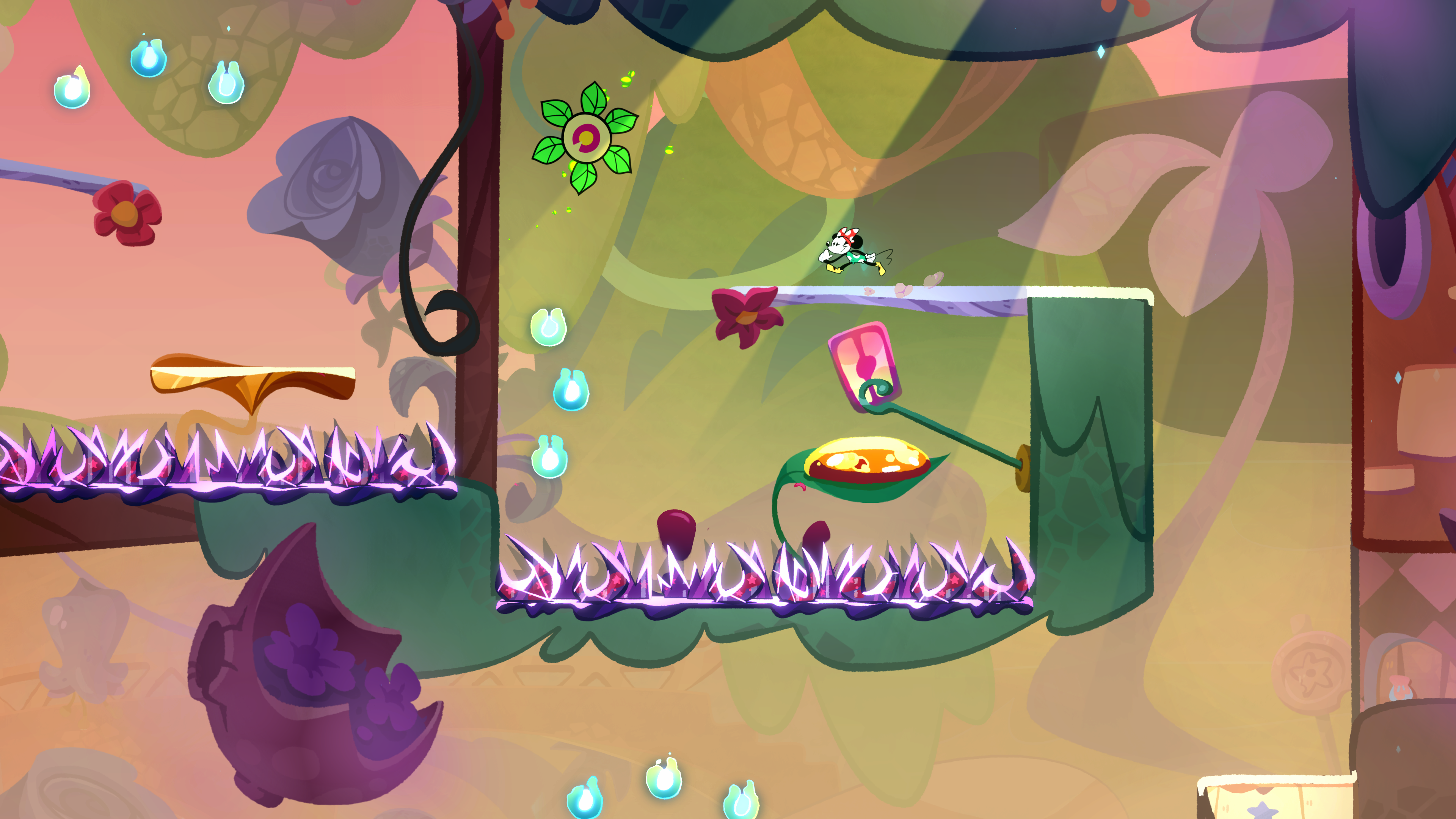
One of the unique features of the game is that there’s no combat. Tell me a little bit about that and what players will be doing as they’re exploring.
That was a decision that was made really early on, to not have combat. The main aspect to the game is all about feeling the flow of movement as you go through the world, so it’s almost like the challenge comes from the mastery of the movement and the abilities to avoid the hazards, and the mechanics within the world. I mean, if you can’t get the movement right in a platformer, that’s 90% of the game, right? So, we then started looking at the movement and wanting to get that feeling of, you know, being a kid in the playground, running around, jumping off the walls… feeling as if you can move anywhere.
We had Post-it notes everywhere, and we had one which just had “combat” written on it. Every day we’d figure out a little bit more of the game and then we would look at this Post-it note, and we’d be like, “well why is that still up there?” And we’d go, “well, because we’re doing a Mickeyvania or a Metroidvania, and all of those have combat right?” And eventually as we made more and more of the game, we were like, it doesn’t make sense for the world that we’ve created.
You guys have tried to design a game that’s really accessible to a broad audience. Talk about some of the features in the game that are designed to make it approachable to newer players.
We spent a lot of time looking into difficulty and how we can measure that. So, when players go in, as soon as they load in and select their characters, they can pick each character’s starting health. If you like a bit of a challenge, you can pick one heart; if you’re playing, say, for example, me with my niece or nephews, they can pick an infinite heart, which will mean they could still have fun, but not feel as if they’re… dying all the time.
We have some welcoming features to do with the different abilities that we have. For example, we have jump assist, we have boost jump assist, and then for stuff like wall jumping, we have it so you won’t slide – so you can stick to the walls.
That leads to my next question – because so far, I feel like I’ve only really seen the characters jumping, doing basic double jumps and simple moves like that. So what are some of the abilities, traversal related or otherwise, that will unlock as you go explore?
So, in what we’re playing now, you have a boost jump and you have wall jump. We also have gliding, ground pounds, swinging and swimming, which all get unlocked throughout the game. And they kind of add different challenges and depths to different areas that you’ve already been in as well.
So all the unlockable, Metroidvania style abilities are all traversal related, then?
Yeah. Also, I’m trying to make Mickeyvania a thing.
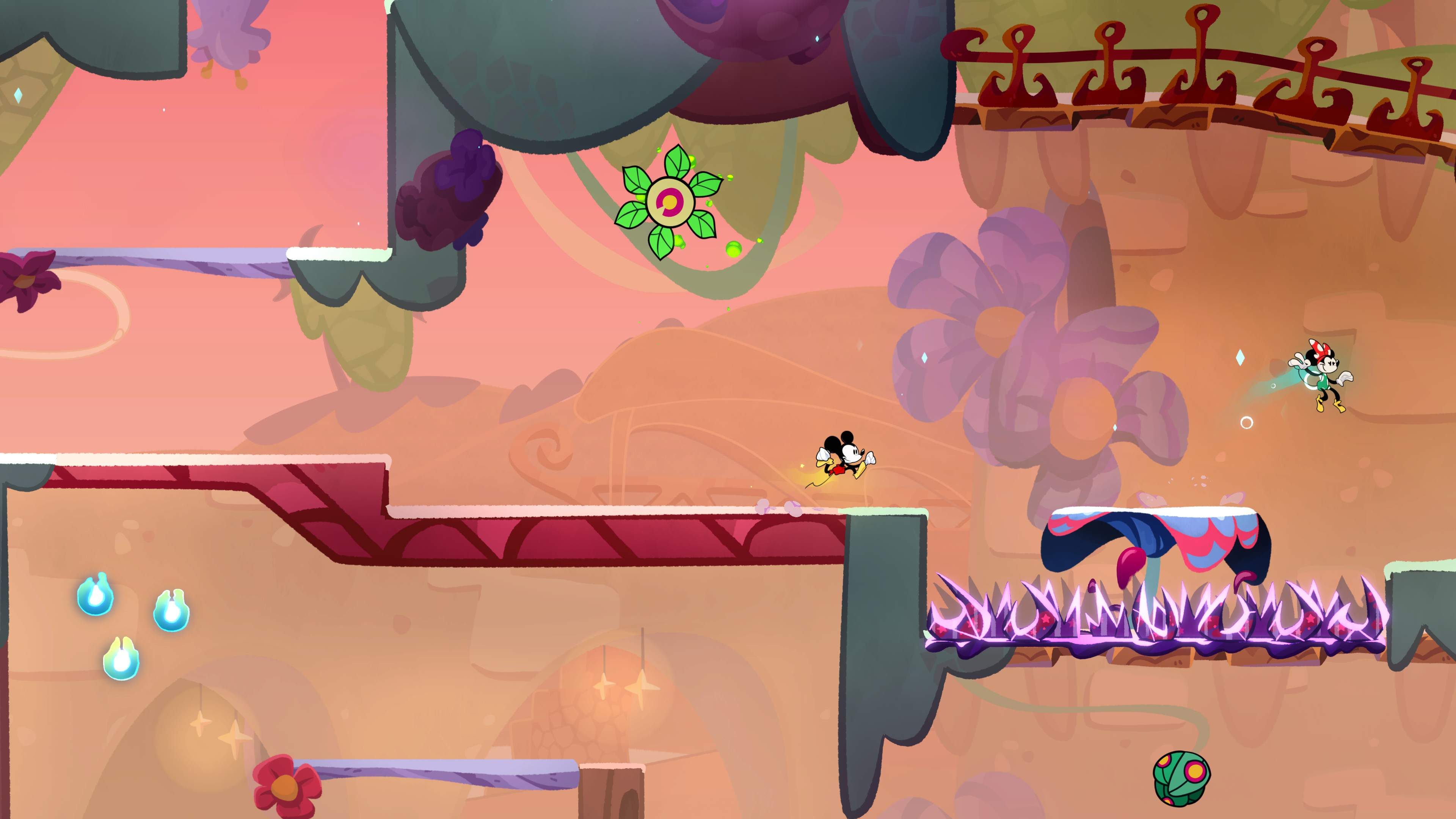
I love it. So, I was reading some of the other interviews that you’ve done, and it sounds like you are actually like a pretty big fan of the whole Mickey IP yourself.
Oh, mate, yeah. And like, I’ve played some very obscure ones. I went back to it a couple weeks ago because I wanted to 100% it, but it was the Disney Extreme Skate Adventure for the PS2. Which is like, it was built on the Tony Hawk engine. And I played it and I was like… who doesn’t want to be Buzz Lightyear skateboarding everywhere? But like, I got to play like my favorites, like Mickey Mania hundreds of times, you know? I’ve got a couple of international systems, so I bought the original Mickey and Minnie game for the Famicom, the Donald Duck game for the Famicom, was playing through those… they have a real big place in my heart, those older games.
And it was figuring out, well why are they still magical now? How did they use the characters, and how did they respect the characters? And then it was kind of like figuring out, okay, we know we want an open world now. That was kind of inspired by the Disney theme parks. If you look at a map of Disneyland, it’s a Metroidvania map – because everything’s connected, everything’s intertwined, right? And then I was like, okay, we’ll have that approach where it’s like an open world.
And I was like, so what’s a Mickeyvania? What is something which can be welcoming to players, but introducing the concepts of Metroidvania? Because I would love this game to be a gateway – if this could then introduce someone, maybe not to go straight into Hollow Knight, but you know, introduce them into that genre? I’d love that, because I think it’s an amazing genre, but sometimes it can have a bit of a hard wall to entry.
Can you tell me a bit about the amount of animation in this game and the care and effort that went into that?
So, when we were thinking about animating the Fab Four to begin with, we used an analogy of toys. So Goofy is a slinky, Minnie is a paper airplane, Mickey is a bouncy ball and Donald is a slingshot. There’s so much effort that’s gone into it from an animation perspective – the animation team has been fantastic. Everything is pencil-tested, put into the game so we can test it. Tweaking it… it’s not as easy as just, like, tweaking one thing. It’s then changing like 80 animations for something. Once we’re happy from a design perspective and it’s feeling right with the animation, we can then move on to full color.
I think there’s just stuff that you can do with 2D that feels nice that you just can’t with 3D. Dlala’s aim has always been to make it feel like you’re playing a cartoon.
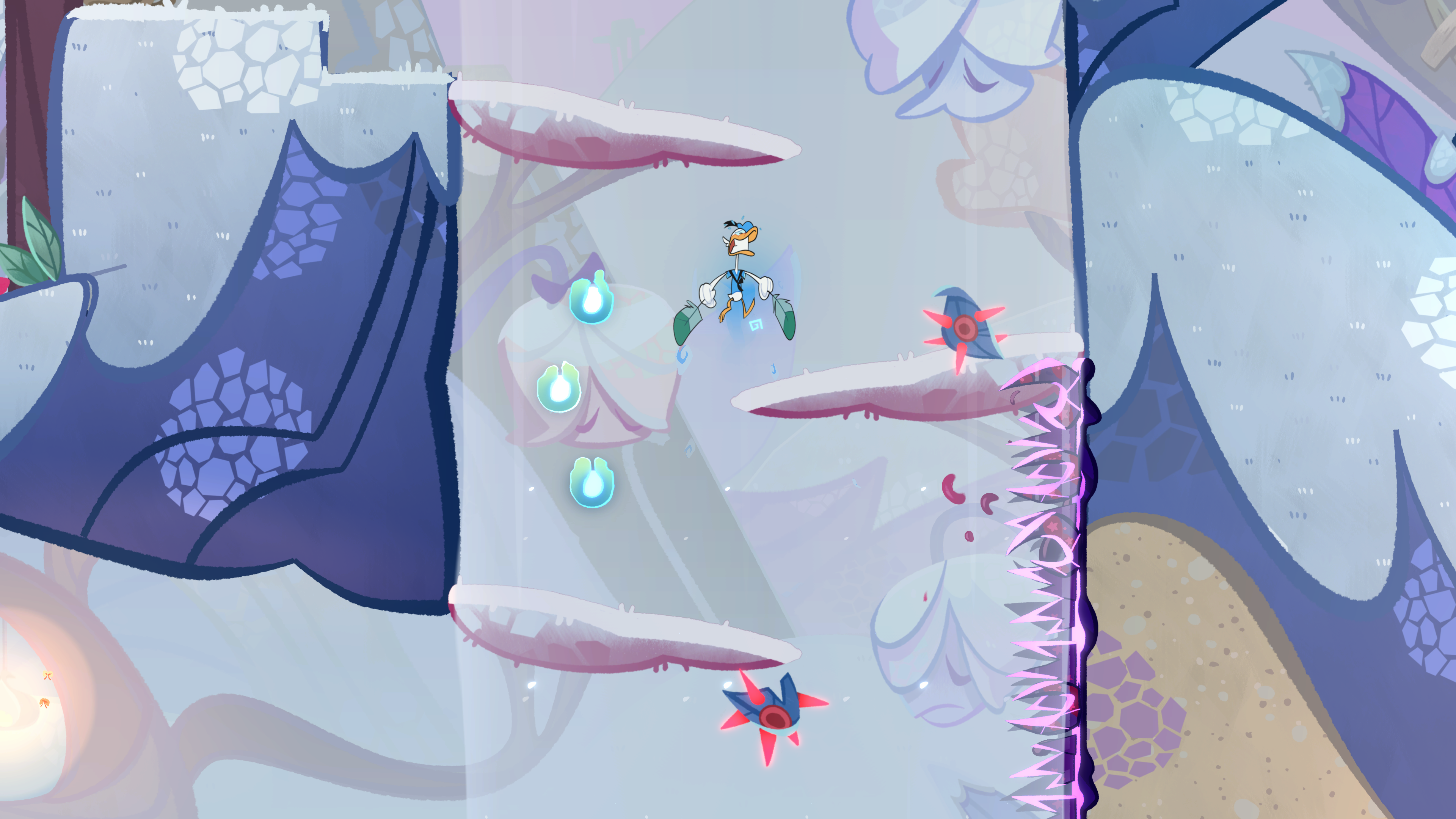
It’s interesting seeing a platformer like this that is so zoomed out. I’m sure it’s been done before, but the characters look so small in their environment. What was the mindset behind that choice?
Yeah, so the camera was something that we backed-and-forthed on for quite some time. We actually do have two separate cameras, we have a singleplayer and a multiplayer one. The thing we were trying to do… because everyone has the freedom of movement, is making sure that everyone can have enough space to see what they’re doing and see what’s available behind them. So it’s kind of like, trying to find a careful balance between that. Once the game was built, we then went through with a lens, and you’ll find it moves in and out dynamically for different sections. And that’s all down to the gameplay which is happening in that area to make sure that we’re giving the player enough room.
Tell me a little bit about the music in Disney Illusion Island.
The soundtrack was done by Dave Housden, who we worked with on Battletoads before. It’s a completely orchestrated soundtrack, so we got to go to Nashville and record with a full orchestra. And when we are thinking about the game as a whole to begin with, and we have that analogy of the park and how the park works, it was like, well, the music should feel like that. You should feel like every area has a distinct kind of audio landscape, and you should feel as if you’re walking through and you can almost hear the music changing as you’re going through. If you get lost, you should know where you are by the musical notes. It needed to be its own character, essentially. I mean, it’s very, very beautiful. If you like the parks and you like orchestra music, you’ll like it.
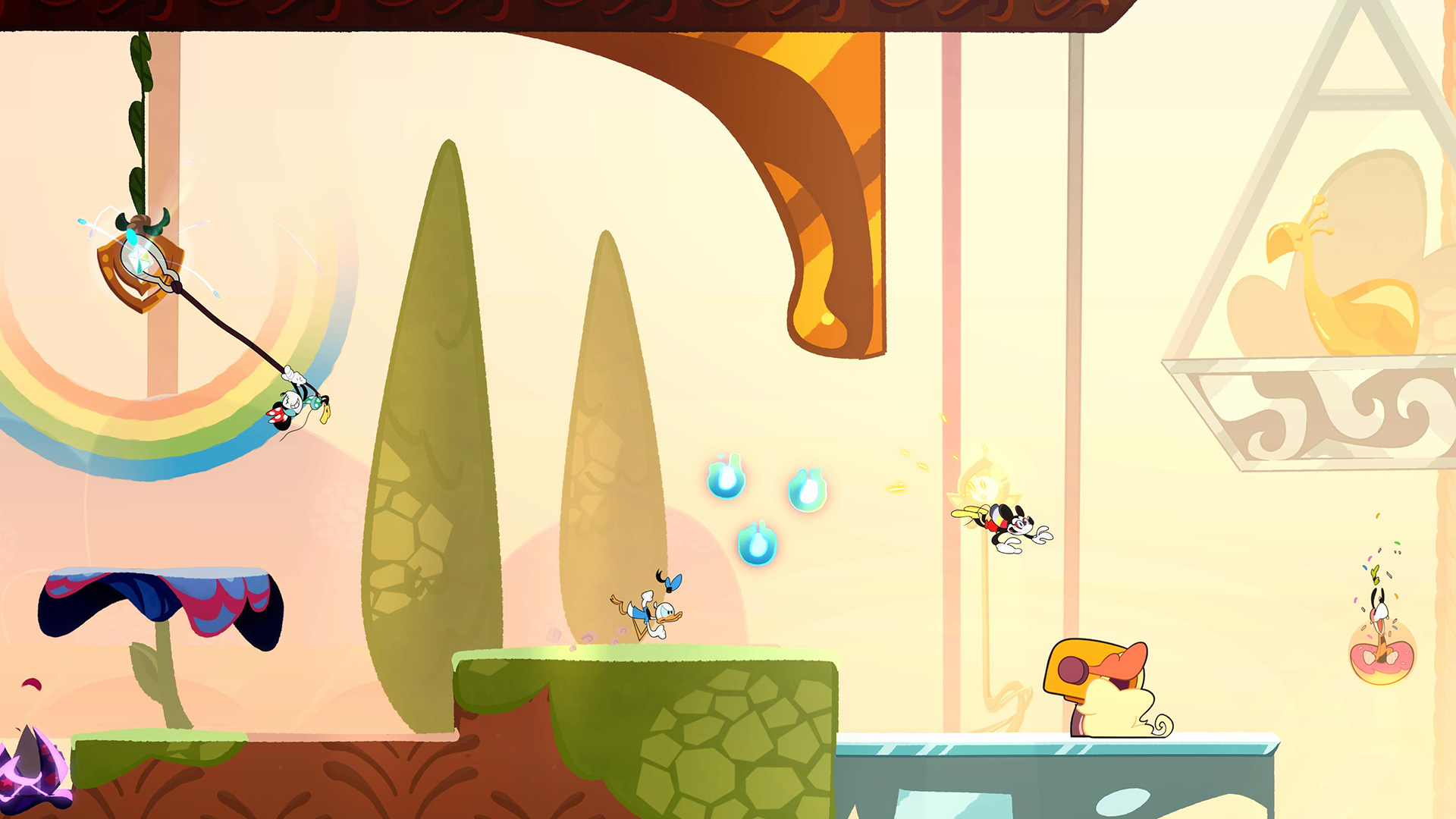
Ever since Disney Interactive shut down in 2016, there haven’t been many original console games like this from Disney outside of a few movie tie-ins. Lately, it seems like they’ve really been licensing out their IP a lot more. From your perspective, did something change? Did Disney approach you about making this game?
We’ve always had a relationship with Disney, so we’ve always been in contact with them. It got to a point where we had finished Battletoads, and we were like, we should start looking at what our next thing’s going to be. And then I think someone brought it up and was just like, oh, should we have a chat with Disney and see whether anything’s there. A long Zoom call took place, nothing was officially greenlit or anything like that. It was just like, right place, right time. You know, as a studio we’ve grown; they’ve kind of grown and they’ve changed their approach to things.
We produced a pitch and were like, this is our vision, this is what we want to do. In this whole process, I don’t think I’ve ever heard Disney say no to us once – but they’d question like, oh, can you show the journey to how you got there? So, it made sense. It’s almost like, showing that you know the background, you know the history, and these are the steps you got to get where you are. But yeah, it’s been an absolutely amazing experience with Disney. Best relationship I’ve had with a partner.
And I think… I don’t want to sound as if I’m blowing my own company’s trumpet here, but like, I think they’re finding teams that can do unique things with their characters and worlds. And you know, Dreamlight Valley’s fantastic, Speedstorm… I love what they’re doing. You know, they’re doing Mike Bithell’s Tron stuff as well.
That was totally out of left field! I was shocked when I saw that. Like, we haven’t gotten anything Tron-related in like a decade.
Yeah, 100%. It kind of made sense though, because it’s Mike Bithell, right? But no, I just think they’re a lot more open to giving great teams the opportunity to do something unique, which I think’s fantastic.
So this game is a Switch exclusive? What led your team to make that decision? You’d imagine Disney would want the game on as many platforms as they could get it on.
I wish I could answer that, but I can’t, because it’s a business question. If I knew, I’d tell you! As we were developing, from the beginning it’s always been built for Switch. It was always what we aimed for. But yeah, I wish I could talk more to that, but I just don’t know.
When you look at the game as a whole, what aspects are you most proud of?
I would say I’m most proud of… what we wanted to do was create moments like I had with my brothers when I played video games like World of Illusion with them, and those kinds of classic platformers. I feel like we’ve built the tools for players to create their own moments to have with each other on the sofa. And I’m extremely proud of the team as a whole, because it’s a massive achievement, and how absolutely lucky we are to be given the four most important characters in the world and to have free reign with them.
Is there anything else that you want to share with potential players about this game?
It comes out 28th of July, $39.99. You can buy it physically and preorder it physically and you can buy it online. I just hope people have as much fun playing as we did making it with Disney. Thank you so much!
Editor’s note: This interview has been lightly edited for readability and brevity only.
